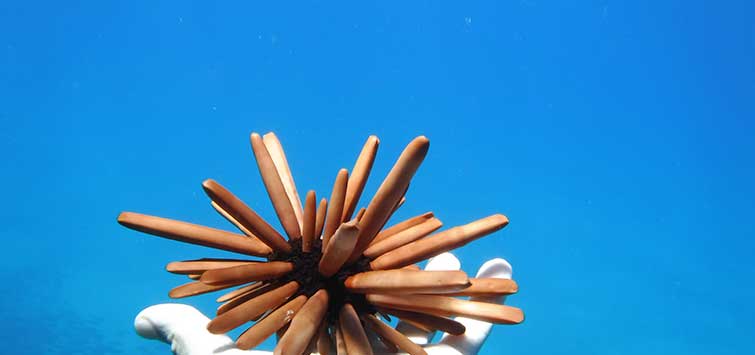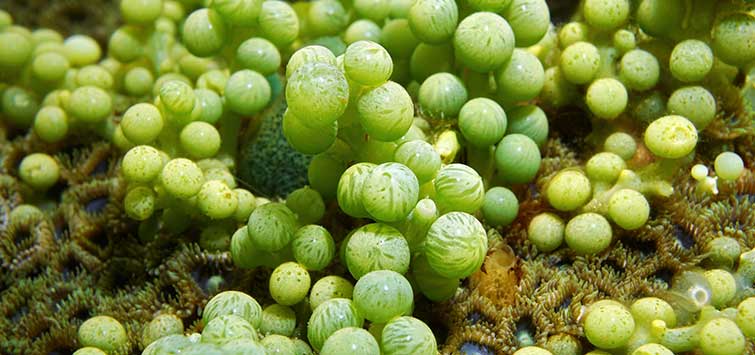Eucidaris tribuloides
Common Names: Mine urchin, club urchin, pencil urchin, slate urchin, rock-boring urchin
Phylum: Echinodermata
Class: Echinoidea
Order: Cidaroida
Family: Cidaridae
Range: Tropical Western Atlantic Ocean: North Carolina to Brazil, including the Caribbean
Natural Environment: Inhabits somewhat shallow coastal environments usually no deeper than about 150 feet. They are most often found in seagrass beds, under rocks, coral crevices, and where algae-encrusted rubble exists.
Water Requirements: Calcium 380 to 430 ppm, alkalinity 2.5 meq/l, pH 8.1 to 8.2, specific gravity 1.024 to 1.026, nitrate <40 ppm, and a temperature range of 72° to 83°F.
Captive Care
This is a small, slow-moving animal with a test/body measuring 2 to 3 inches featuring short, thick spines that usually measure no longer than 5 inches. Body color varies from brown to reddish brown, and its primary spines are arranged vertically in 10 rows. Secondary rows of very short spines are arranged between the longer spines. The spines can be regenerated if broken or lost, and their color depends upon the amount of encrustation covering them, usually coralline algae.
Feeding
Though their main diet is algae, they are omnivorous creatures that will feed upon small invertebrates such as bivalves, gastropods, bryozoans, and sponges, along with detritus. In fact, urchins have a desire for calcium carbonate (there goes the coralline algae!) and therefore can be given pieces of cuttlebone to graze upon, which may help satisfy this need and possibly save some valuable coralline algae. If the aquarium is somewhat devoid of algae, various frozen foods will also be accepted, as would those small plaster-of-Paris feeding stones that contain seaweed and algae.
Reef Safe?
This is a very hardy, long-lived species that is fairly reef safe, though it may knock over small animals not securely attached to some form of substrate. Nevertheless, it’s probably better suited for fish-only systems with lots of algae-covered live rock. In fact, in situations where undesirable forms of algae are a major problem, these urchins can quickly help reduce their content. But it should be remembered that any large consumer of algae also produces copious amounts of waste, so additional filtration and vacuuming of the sandbed might be required.

.png?h=595&iar=0&w=2781&hash=5FD5E69473BCC22199FBFA2FB71B6033)



